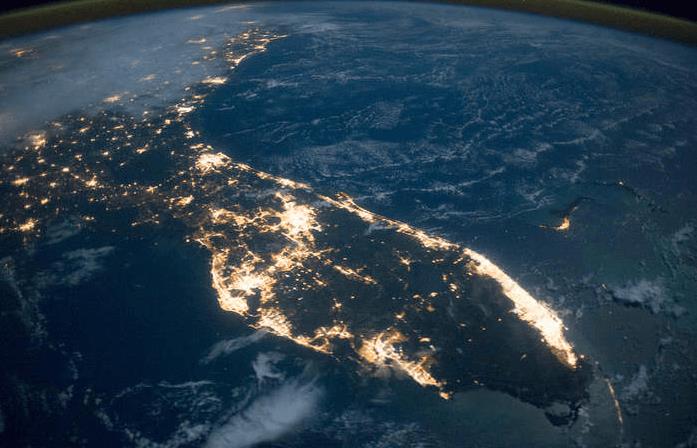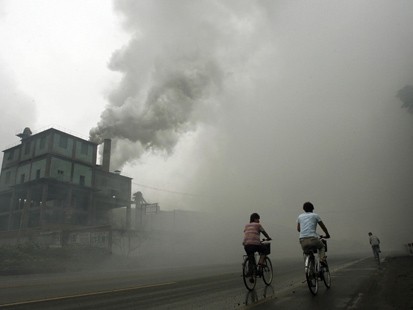73 F. average high on September 13.
66 F. high on September 13, 2016.
September 14, 2099: The next total solar eclipse will take place over Minnesota. It will be visible in the Twin Cities, depending on the weather.
September 14, 1964: The earliest official measurable snowfall occurs in Minnesota with 0.3 inches at International Falls.
September 14, 1852: Early frost hits Ft. Snelling and ends the growing season.
Weekend T-Storms - The Perils of Prognostication
"The greatest danger for most of us is not that our aim is too high and we miss it, but that it is too low and we reach it" said Michelangelo, who apparently had a lonely social life, but man could he sculpt!
The problem with weather forecasts? They're too good to ignore, but not quite good enough to rely on. Research shows a one-day improvement in accuracy each decade. In other words, today's 7-Day forecast is as accurate as a 6-Day outlook, back in 2007.
Weather models will continue to improve over time. What's harder to model is human behavior. Will people do the right thing the next time an Irma-level "atmospheric bomb" approaches? It's a fine line between over-hyping a storm, and using language that doesn't convey the urgency of a life-threatening situation.
It's been a good run, weatherwise - but T-storms bubble up north of St. Cloud later today. More widespread showers and T-storms stalk Minnesota Friday and Saturday, but a cooler front sweeps most of the blobs on radar into Wisconsin Sunday; the nicer, drier day of the weekend.
THIS is why I have a crush on September!
ECMWF (European) forecast valid midday next Tuesday, September 19 (showing a possible tropical storm or hurricane east of New Jersey courtesy of WSI.
Unhealthy Air Today. The combination of smoke from western wildfires, high humidity and temperatures near 90F later today will push ozone levels to unhealthy levels for "sensitive groups" today, according to the Minnesota Pollution Control Agency.
Our Weather-Prediction Models Keep Getting Better, and Hurricane Irma is the Proof. Still far from perfect, but getting better with every passing year. Here's a clip from The New Yorker: "...In 2015, a paper in Nature titled “The Quiet Revolution of Numerical Weather Prediction” noted that, in the past forty years, the accuracy of three- to ten-day forecasts has been increasing by about one day per decade. “Today’s six-day forecast is as accurate as the five-day forecast ten years ago,” the authors, led by Peter Bauer, a scientist with the European Centre for Medium-Range Weather Forecasts, noted. The growth and path of Hurricane Sandy, in October of 2012, were accurately predicted eight days in advance, and both the 2010 Russian heat wave and the 2013 U.S. cold spell were foretold at least a week ahead of time. Last Tuesday, much was made of the fact that a satellite map of rainfall estimates in the Houston area required two new colors to represent the tremendous amount of rain—between forty and sixty inches—that was expected. But no less astonishing, in the end, was the map’s pinpoint accuracy...."
The National Weather Service's New Philosophy. Going on offense, not being content to play defense. The Atlantic explains: "...Agency leadership fell into a series of meetings with politicians, emergency planners, and social scientists to figure it out. “The expression in that meeting was ‘You’ve got to go the last mile with your forecasts,’” Uccellini said. “We needed—with a sense of urgency—to move beyond forecast warnings and connect with decision makers.” After months of meetings (which Uccellini led), the agency settled on a new guiding philosophy in late 2011: “Building a Weather-Ready Nation.” Instead of merely publicizing changes to the weather and hoping people noticed, it would take responsibility for getting sound science to officials. It embraced resilience and responsiveness as worthwhile goals, and it recruited “Weather-Ready Ambassadors” to communicate the dangers of impending natural disasters..."
Photo credit: Mark Makela / Reuters.
What Florida's Power Outages Looked Like from Space. Vox has the story: "...So
much power was knocked out, you can clearly see it from space. Here’s
an image of Florida from May 11, 2017, courtesy of NOAA and NASA’s Suomi
satellite, which can spot nighttime city lights from 512 miles above
Earth. This is what South Florida normally looks like after dark. At
night, Miami, West Palm Beach, Naples, and Key West are aglow with
people having a good time. (May 11 was chosen as a reference because
there was a similar amount of moonlight that evening.)..."
Hurricanes: Size Matters. A YouTube video posted at Holy Kaw! puts the size of Irma into stark perspective: "With hurricane season upon us, there’s a lot of talk about “the worst” storms in history. This size comparison shows you the difference in sheer size of hurricanes (not their destructive power)..."
A Devastating Hurricane Season Exposed America's Flood Insurance Problem. TIME has perspective on how we're encouraging bad behavior and more flood damage down the road: "...The program's financial troubles come from its antiquated way of considering flood risk, policy experts say. The program sets standards for insured properties based on historical flooding data. Under the program, insured homes must be built to withstand what is known as a 100-year storm, or a storm that had a 1% chance of occurring in a given year at the time FEMA mapped the data. The approach makes sense on the surface, but a slew of changes — including sea-level rise, warmer ocean temperatures and new construction that has affected the likelihood of flooding in a given area — have made past risk an uncertain predictor of the future...."
Photo credit: "People linger on the beach before Hurricane Irma’s landfall in Florida." (Matt McClain/The Washington Post)
How to Build Hurricane-Proof Cities. I thought a story at The Atlantic was timely - here's a link and story excerpt: "...One solution of course is to simply stop draining wetlands. But cities will also have to find out ways to reverse the existing degradation of wetlands, and to scale back roads and suburbs that are already built. Perhaps the latter goal is not feasible, but cities can use better planning to create more purposeful density inside their built boundaries and slow geographic growth, while at the same time restoring wetlands and even encouraging their growth and incorporation within existing areas. At any rate, American cities will have to be built in a way that goes against what appears to be their nature, using the fullness of human ingenuity not to trample the earth and replace natural with the artificial, but to engineer both nature and the city in a way that emphasizes their codependence..."
How do Cities Rebuild After Hurricanes Like Harvey and Irma? The Guardian ran a story that highlighted how the Netherlands stepped up to help New Orleans after Katrina, and what every coastal city can do to lower risk: "...A year after Katrina hit, the Netherlands returned the favour by briefing officials from the Louisiana metropolis about the Dutch mantra of “living with the water”. This principle involves huge fortifications in key areas against flood waters – New Orleans now has the largest flood barrier in the world – but also emphasizes the need for green, or natural, infrastructure such as grass, woodland and wetlands to soak up water. Innovations such as green rooftops, where plants absorb some rainwater before it’s funneled to barrels rather than on to the street, and permeable pavements are also being embraced. There are now seven “rain gardens” in New Orleans – essentially parks where water pools and is absorbed – and the city is spending a further $220m on new green areas that will draw away water that would otherwise end up in the streets or in people’s homes. Building codes have been tightened up to focus more heavily on flooding..."
Photo credit: "A local resident and her dog walk home in Houston in the aftermath of Hurricane Harvey, the strongest to hit the US since 2005." Photograph: Darren Abate/EPA.
Hurricane Irma Smashes Into the American Dream. An article at Daily Beast caught my eye: "...The total worth of boomers is predicted by 2030 to peak at $44 trillion and hundreds of them are moving to Florida every day. The hurricane’s impact will test their nerve. Florida’s building codes have tightened notably since the devastation wrought by Andrew 25 years ago. Power lines are underground at all new developments and above-ground lines have been hardened. Hospitals and medical centers have their own independent electricity systems if the grid goes down. Nonetheless, nobody planned for a storm as powerful as Irma. It is even more worrisome for some of the older communities that were early enough to find prime sites nearer to the ocean that were still available for those of modest means. These are vulnerable because they don’t come close to conforming to the new codes..."
Photo illustration by the Daily Beast.

A Requiem for Florida, The Paradise That Should Never Have Been. Hey, I love Florida as much as the next guy. I prefer to rent, not own - just in case. Here's an excerpt from Politico: "...There was really just one reason South Florida remained so unpleasant and so empty for so long: water. The region was simply too soggy and swampy for development. Its low-lying flatlands were too vulnerable to storms and floods. As a colorful governor with the colorful name of Napoleon Bonaparte Broward put it: “Water is the common enemy of the people of Florida.” So in the 20th century, Florida declared war on its common enemy, vowing to subdue Mother Nature, eventually making vast swaths of floodplains safe for the president to build golf courses and Vanilla Ice to flip houses and my kids to grow up in the sunshine. Water control—even more than air conditioning or bug spray or Social Security—enabled the spectacular growth of South Florida..."
Hurricane Irma: Florida's Overdevelopment Has Created a Ticking Time Bomb. Hype? Wait 'til the next one. Here's an excerpt from Scientific American: "Millions are without power in Florida after Irma—one of the most powerful Atlantic hurricanes on record—swept through the state this weekend before weakening to a tropical storm. It caused its fair share of damage, but Florida’s most ominous fears did not play out; extremely vulnerable eastern coastal areas, including Miami, were spared the worst. But meteorologist and disaster risk expert Stephen Strader says the state is still in a very dangerous position, due to intense population growth and overdevelopment of its low-lying coastal zones. He predicts it is only a matter of time before another storm devastates the Sunshine State and some of its major cities. And he adds that it is not the only state facing this threat: Over-development and expanding populations across the U.S. mean natural disasters now pose a greater risk to many other places, such as Houston and Oklahoma City..."
Elegy for the Sunshine State. I think rumors/predictions of Florida's imminent demise are being greatly over-exaggerated, but there's little doubt that there will have to be a managed retreat from the most vulnerable coastal communities in the years/decades ahead. I predict it'll be a mess. Here's an excerpt from The New Yorker: "...In the nineteen-nineties, I covered the Miami-Dade county commissioners as a reporter for the Miami Herald. Miami is a vibrant, tumultuous city, remade every few years by the energy of its new arrivals. But, in the time I worked there, one thing never changed: the enthusiasm with which the elected commissioners greeted every new housing or commercial development unveiled before them. It was a kind of sad ritual: A new housing development would come up for a vote, and an earnest member of the county’s planning-and-zoning staff would warn about the development’s impact on the quality of the schools, on the phlegmatic pace of rush-hour traffic, on the erosion of beaches. Almost always, the pleas were ignored; the economy of modern Florida is a kind of Ponzi scheme, where tomorrow’s growth pays for today’s needs, and real estate is the largest employer. It was a confidence game, and the commissioners were only too happy to go along..."
File image: Trip Advisor.
How FEMA Uses Waffle Houses in Disasters. Yes, this is a real thing, and it turns out to be very accurate and helpful during an emergency. USA TODAY reports: "...It's
called the Waffle House Index, or test, which uses the operating
conditions of the resilient Southern restaurants as a barometer for how
well an area will recover from a hurricane, tornado or other hazard.
"The Waffle House test just doesn't tell us how quickly a business might
rebound — it also tells how the larger community is faring," said a
FEMA blog post from 2011, when Craig Fugate was administrator under
former president Obama. "The sooner restaurants, grocery and corner
stores, or banks can re-open, the sooner local economies will start
generating revenue again — signaling a strong recovery for that
community..."

Image credit: "Concept image of the Volocopter 2x flying through a city." (Volocopter)
Snopes.com weighs in here.
TODAY: Sticky sun, T-storms north. Winds: S 10-15. High: 89
THURSDAY NIGHT: Partly cloudy and humid. Low: 67
FRIDAY: Some sun, muggy. T-storms late. Winds: S 10-15. High: 86
SATURDAY: Last steamy day. More T-storms. Winds: S 10-20. Wake-up: 68. High: 87
SUNDAY: Partly sunny, breezy & less humid. Winds: NW 8-13. Wake-up: 59. High: 74
MONDAY: Mix of clouds and sun, comfortable. Winds: SE 7-12. Wake-up: 55. High: 73
TUESDAY: Blue sky, breezy and milder. Wake-up: 67. Winds SE 8-13. High: 81
WEDNESDAY: Another summer rerun, sticky. Winds: SE 8-13. Wake-up: 68. High: 86
Climate Stories...
Image credit: "Hurricane Harvey on August 25, 2017, as seen by the European Space Agency's Copernicus Sentinel-3A weather satellite." Credit: ESA (CC BY-SA 3.0 IGO)
Leading Scientist on Irma: "Climate Change Effects Are No Longer Subtle". Observer has the story; here's an excerpt: "...Dr. Mann stated that the frequency of hurricanes this season isn’t as much cause for alarm as their rapid intensification. “Harvey was the wettest storm on record in the U.S. as a result, in part, of very warm Gulf ocean surface temperatures, which meant there was more moisture in the atmosphere available to be turned into record flooding rainfall. And Irma is now the longest-lived category 5 storm in history for the Atlantic. That is due to the very favorable environment it has found in the form of very warm ocean surface temperatures,” he said. “The impacts of climate change are no longer subtle. We see them playing out in real time, and this last couple weeks is a stunning example of that...”
Harvey and Irma Aren't Natural Disasters - They're Climate Disasters. The storms would have formed anyway, but did (consistently) warmer ocean water amp them up and make them stronger and wetter? Eric Holthaus reports for Grist: "...Back-to-back hurricane catastrophes have plunged the United States into a state of national crisis. We’ve already seen one worst-case scenario in Texas: For the moment, Hurricane Harvey stands as the most costly natural disaster in U.S. history. And now there’s Irma, which has wreaked havoc across the entirety of Florida, America’s most vulnerable state. In just two weeks, the U.S. could rack up hundreds of billions of dollars in losses. Make no mistake: These storms weren’t natural. A warmer, more violent atmosphere — heated up by our collective desire to ignore the fact that we live on a planet where such devastation is possible — juiced Harvey and Irma’s destruction..."
Evacuating Millions is not an "Effective or Sustainable" Response to Hurricane Threats. Here's a Better Response. An estimated $290 billion in damage between Harvey and Irma? An Op-Ed at CNBC.com caught my eye: "...If Hurricanes Harvey and Irma have taught us anything, it's that climate change is here—and it's coming at a real cost to human lives and property. It's clear that continually evacuating millions of people from our coastal cities is not an effective or sustainable way to protect Americans from record-breaking storms. Instead, we need to attack the root causes of climate change while also adapting to its impacts. American taxpayers, businesses, and communities simply cannot afford for our elected leaders to spend scarce public dollars and make critical planning decisions that deny the basic reality of climate change..."
The Military's Warning on Global Warming. Here's a clip from Consortiumnews: "...We have had 378 months of above average temperatures. That’s no hoax. Scientists say Arctic ice is in “a death spiral.” That’s no hoax. People fish off Bangladesh in what was once a busy market before rising seas claimed it. That’s no hoax. Temperatures rose in Iraq and Kuwait to 129 F in July 2016 and to 112 F in parts of France and Italy in August 2017. That’s no hoax. “For every degree Celsius that temperature rises, agricultural scientists calculate, wheat yields drop 10 percent in the Earth’s hotter midriff,” as Alan Weisman reports in his tellingly entitled book Countdown. That’s no hoax. Environmental refugees no longer come only from Island states like the Maldives and Tuvalu and from Bangladesh. They come from Houston and Florida and will be coming from inundated cities on our coasts..."

McCain Baffled About GOP Climate Denial: "I Can't Divine Their Motives". Follow the money. Here's an excerpt at ThinkProgress: "...Sen. John McCain (R-AZ) says he has no idea why his GOP colleagues deny basic climate science. But the former GOP nominee for president — who campaigned on climate action during the 2008 election — knows that climate change is real, its effects are “unprecedented,” and solar energy is one of the cheap solutions. On Sunday, CNN’s Jake Tapper asked McCain a long question about Hurricane Irma and global warming and GOP climate denial, noting “the storm is more intense, experts say, because of climate change..."
Map credit: Paul Horn, InsideClimate New.

File photo: AP.
No comments:
Post a Comment